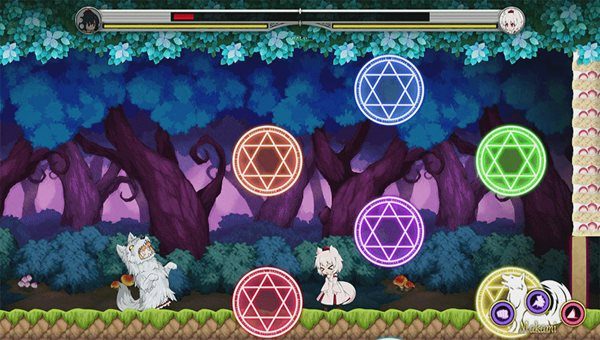Also On: PS4
Publisher: NIS America
Developer: Team Shanghai Alice/Mediascape/AQUA STYLE
Medium: Digital
Players: 1-2
Online: Yes
ESRB: T
Having Touhou Double Focus as my first exposure to the Touhou Project probably isn’t the ideal way to be introduced to the series. After all, the Touhou games are renowned for being crazy bullet hell shooters, whereas Touhou Double Focus is a Metroidvania-style platformer. While I’m sure that the overall process for creating one style of game isn’t all that different from the process of creating another, from a design perspective, I don’t know that the skills are as transferable. Or, at least, that’s the impression I have after playing Touhou Double Focus.
I don’t mean to say it’s an offensively bad game or anything. It does everything you’d expect a Metroidvania game to do: you explore a map, gradually opening up new areas as you gain new or improved abilities, uncovering treasures and secret rooms along the way. In fact, it even has an idea or two that you wouldn’t normally expect from a platformer of this ilk — the “double” part of the title comes from the fact you’re balancing two characters, Aya and Momiji, bringing them in as the situation warrants. Switching between the two requires pretty quick instincts, which isn’t the sort of thing you’d normally associate with this particular genre. For the most part, though, if you’ve ever played a Metroidvania platformer, you’ll know what to expect here.
It’s in that qualifier, “for the most part,” where Touhou Double Focus gets into trouble. It relies very heavily on players knowing what to do just based on previous experiences with the genre. There are no tutorials or explanations here, as far as I could tell. While this works most of the time, it also means there are points — like, say, when you want to use your healing ability, or when you’re switching between characters — where you’ll have to push a bunch of buttons and hope that one of them does what you want it to do, until you ultimately figure it all out.
Not only that, there are some pretty baffling design choices. For example, when you die, your options are either respawning in the same room and continuing on, or getting sent back to the beginning of the level where you have the option of saving your game. Picking the former means that you can’t save your progress, but also means that you don’t need to rediscover the entire map; picking the latter means you get to save, but also that all your progress and exploration is gone.
Neither option is great, not least because death comes early and often in Touhou Double Focus. Neither Aya nor Momiji are adept at avoiding enemies — partly because they don’t move very well and generally need to be extremely close to their targets if they want to attack, and partly because the enemies have attacks that are much more effective and far-ranging than those of either main character. Couple that with the fact that respawning in a level doesn’t replenish your store of healing abilities, and you can see how it’s easy to get stuck in a perpetual death loop.
The obvious solution, of course, is to just not play Touhou Double Focus. Unless you’re a diehard Touhou completist, you won’t exactly be missing much. There are significantly better Metroidvanias on the Vita, and whatever may be gained from the one twist here — the aforementioned double heroines — is more than outweighed by the overall lacklustre performance.



